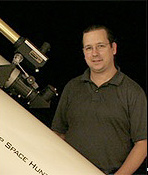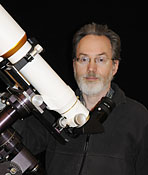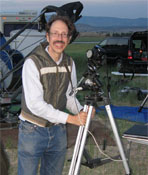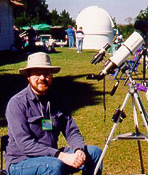<<PREVIOUS -
HOME -
CONTENTS -
NEXT>>
OMSI ASTROIMAGING -
![]()
<<PREVIOUS -
HOME -
CONTENTS -
NEXT>>
OMSI ASTROIMAGING -
![]()
OMSI Beginner Astrophotography Workshop 2009 Summary
Oregon Museum of Science and Industry (OMSI) Classroom 1 1945 SE Water Avenue Portland, OR 97214-3354, USA Updated on May 3, 2009 |
|
|
|
|
|
|
||
|
|
|
|
|
|
|
|
|
|
|
|
|
|
|
|
|
|
|
|

Neil Heacock is an IT professional who moved out of the city for the first time in 2003. After living in LA, Seattle and Portland, he moved to somewhat more rural area of Clark County and really saw the stars. This birthed a strong interest in astronomy which has continued to grow and develop over the past 6 years. In 2006 Neil began to dabble in astrophotography and after attending the 2007 Northwest Astrophotography Conference his imaging stared to mature. Neil primarily considers himself a visual observer but with such amazing and easy to use imaging systems available he now images with one setup while observing with another. Neil uses a Canon 20D DSLR camera and the images he produces are excellent. |
|
|

Greg Marshall is a relative newcomer to astronomy and went directly into astro-photography beginning in 2005. But he has many years of experience in conventional photography and much of his professional career as an electronics engineer has been involved with image capture, processing and printing. Currently, he is employed by Xerox Corporation, where he designs specialized computers for image processing in printers and copiers. |
|
|

Pat Hanrahan Pat Hanrahan began his interest in astronomy as a child when he unsuccessfully tried to spot Sputnik back in 1957. While observational astronomy is his main interest, Pat has experimented with various simple astrophotography methods. One of his favorite techniques involves wide field astronomy (astrophotography using camera lenses instead of telescopes). His early work was with film and he currently uses a Canon Rebel Xti DSLR camera. |
|
|

David Haworth enjoys astronomy imaging and processing those images to bring out details that cannot be seen easily by visual observing with the same size optics. David Haworth started astroimaging with a Cookbook CCD camera he built in 1996 and since then has used many types of cameras to image the sky. David wrote Chapter 2: "Afocal Photography with Digital Cameras" in the second edition of "The Art and Science of CCD Astronomy" which was published in December 2005. David's images have appeared in magazine front covers, articles, books, catalogs, videos, music CD covers, T-shirts, other web sites, etc. |